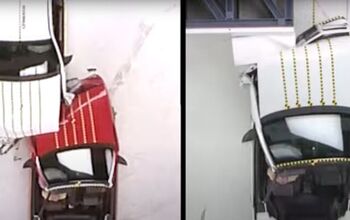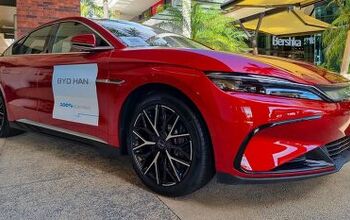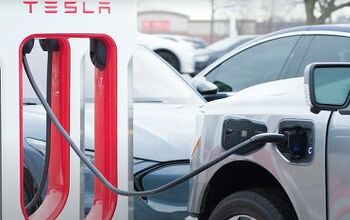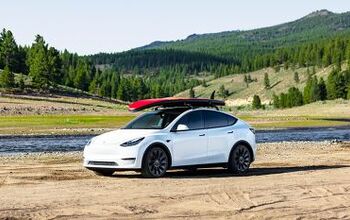79 Views
And Now: The 120 MPH Crash Test
by
Edward Niedermeyer
(IC: employee)
Published: October 21st, 2011
Share
{
"id": "9413591",
"alt": "",
"title": "",
"video_link": "https://www.youtube.com/embed/l4PjSVOnrVg",
"youtube_video_id": "l4PjSVOnrVg"
}
{
"width": 634,
"height": 357,
"showRelated": true
}
Usually it’s the Germans who we find continually pushing the crash-test envelope, but this time around the UK’s Fifth Gear TV Show that decided to crash a car at 120 MPH. Sure, the Germans already proved how much of a difference can be made by crashing at 50 MPH instead of the traditional 40 MPH, just as the Chinese can make any of their cars appear safe by testing at 35 MPH rather than 40 MPH. But 120 MPH? It’s never been done before…
Edward Niedermeyer
More by Edward Niedermeyer
Published October 21st, 2011 2:28 PM

































Comments
Join the conversation
That was amazing. Does anyone know what the NCAP score was for that year/model?
I'm always amazed at how many people talk about how they "safely" hit 120 in their Honda Civic on car forums. It's everywhere except may the Toyota Corolla fansite. A stock vehicle simply is not meant to deal with this sort of speed. It doesn't matter when it was built. In fact, this rather reminds me of a kid I knew high school. He had a V8 Firebird, of the early 90s vintage I think, and went plowing down a road at 100+. He caught some air over a bump, lost control, and completely annihilated the car and himself. I remember going to the crash scene the next day, and there were still bits of the interior and broken CDs that had spilled across the grass as the car's frame came apart. He did survive, for which he was incredibly lucky, but spent many months in the hospital.
If you want to figure this out for yourself, get a good introductory physics or engineering text. Halliday and Resnick or Beer and Johnston both will work but there are plenty of others too. Look at the conservation of energy equation, but for figuring out the deceleration the impulse and momentum equation will tell you the average deceleration if you know duration of the crash. The trick for manufacturers is to get that actual deceleration curve as close to the flat line average as possible for as many accident scenarios as possible. All while making a car that people want to buy. Here's what the texts will tell you. 1) car into barrier at 60mph dissipates 1/4 the energy of car into barrier at 120mph - so does your body if you are in that car 2) roughly the same energy dissipation would occur in the highly unlikely case of two cars head on at either 60/60mph or 120/120mph. 3) no points for the deformation of the opposing car - symmetry considerations mean it doesn't matter 4) the small rebound that might occur means the total deceleration is greater than if the collision were perfectly inelastic - not by enough to matter in the slightest at 120mph - cars don't ricochet around like pool balls 5) no such thing as a perfectly balanced symmetric collision - a barrier won't give you what any actual collision will, but each actual collision will be slightly different anyway - that's why you try and set a reasonable, easy to replicate standard, like a barrier......
www.wreckedexotics.com Very Instructive.